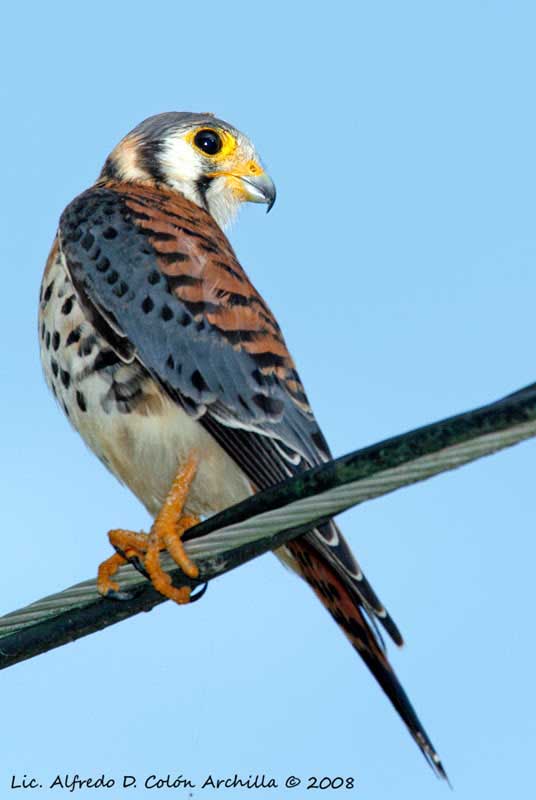
American Kestrel
Falco sparverius
Falconiforme Order – Falconidae Family
BIOMETRICS:
Length: 25-29 cm
Wingspan: 50-60 cm
Weight: M : 103-120gr- F : 126-166gr
DESCRIPTION:
American Kestrel has bluish-grey wings, chestnut back with black patches, chestnut tail with wide white tip, and two vertical black stripes on the white face. Bill is short and hooked. Wings are narrow, long and pointed. Crown is grey, cheeks are white. A black patch is on the rear crown, on both sides. Seen from behind, flight feathers are pale, with dusk bars.
Adult male has reddish patch on crow. Nape, breast, back and tail are reddish. Tail shows a wide black stripe, and another terminal white band. Belly is pale. Wing coverts are bluish-grey. Black flight feathers have white tips, as a “necklace of pearls”. Scapulars are spotted with black, as wing coverts and flanks.

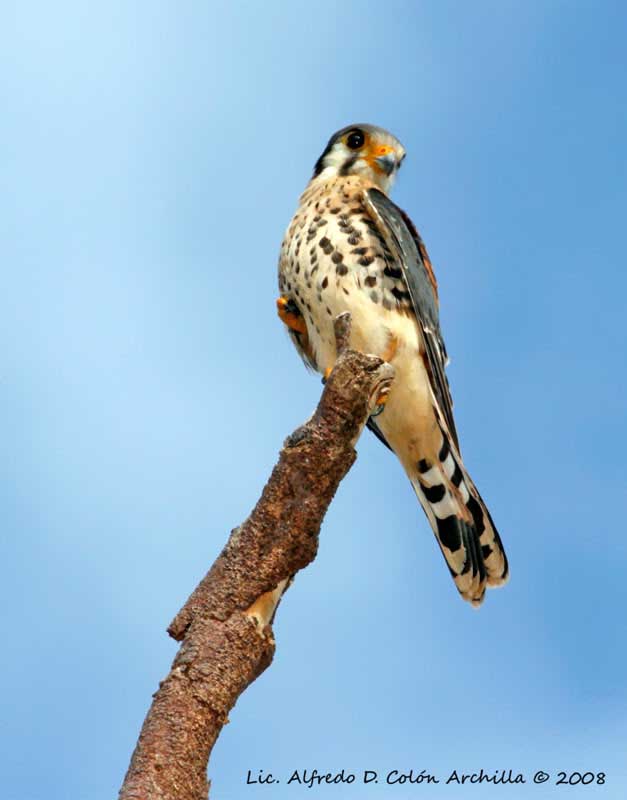
Adult female has pale buff breast streaked brown. Nape, back and wing coverts are reddish-brown. Back and wing coverts are heavily streaked with black. Tail is reddish-brown with numerous black bars of the same wide, and a narrow terminal white band.
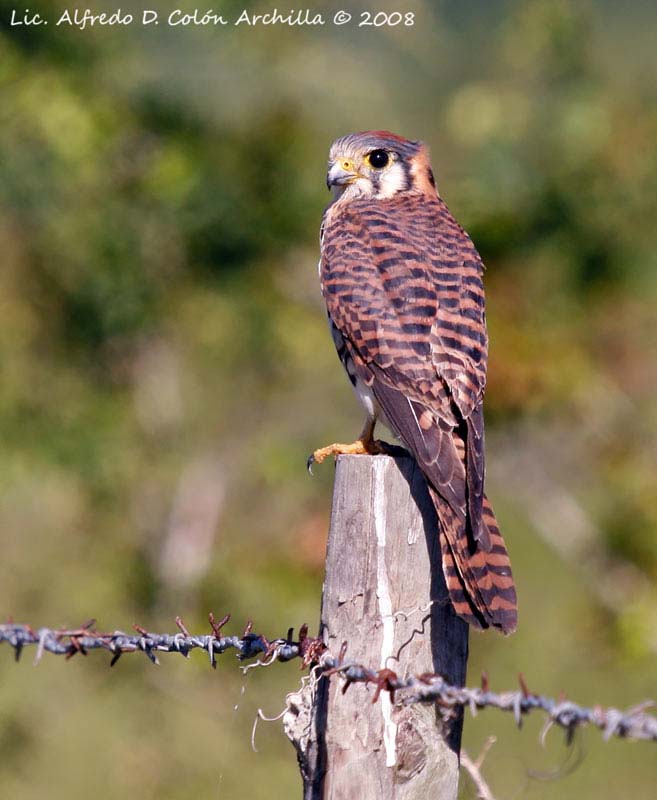
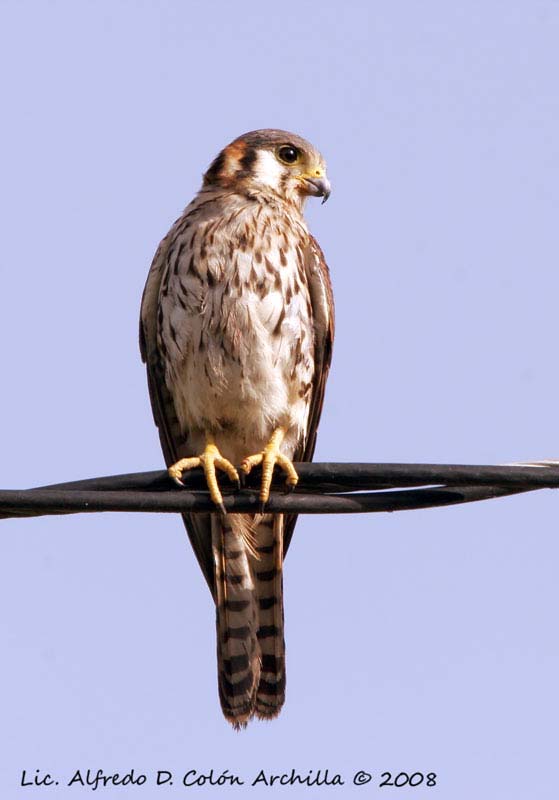
Immature has reddish-brown back heavily barred with black and streaked chest.
VOICE: SOUNDS BY XENO-CANTO
American Kestrel frequently utters a sharp “killy-killy-killy”.
HABITAT:
American Kestrel likes forest edges, farmlands, open fields, pastures with dead trees, marshes, urban areas, grasslands, arid plains, desert with giant cactus, wooded canyons, open woodlands.
RANGE:
North America. From Alaska to Tierra de Fuego, as well in town as in countryside.
BEHAVIOUR:
American Kestrel often perches on wires along the roads in rural areas. It hunts on the wing, often hovering, catching its prey with its talons, and killing them with a violent blow behind the head. It often moves its tail up and down when landing. It hunts swooping on its prey as soon as located. It hunts from perches, poles, wires or trees. During summer, it hunts at dawn and dusk. During winter, it hunts all the day long. It is a bird of prey seizing living prey.
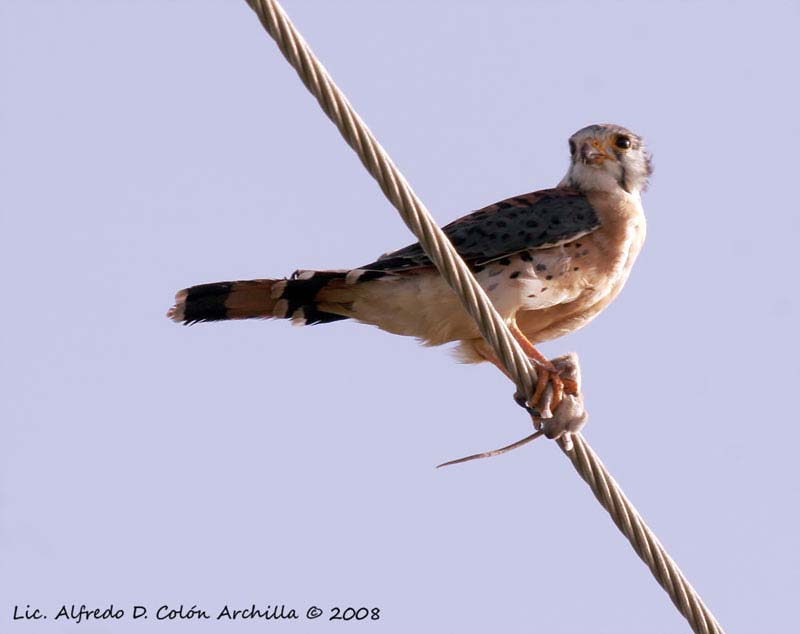
It is very aggressive, and it will chase away any other raptor of any size from its territory. Except during breeding season, it is a solitary bird.
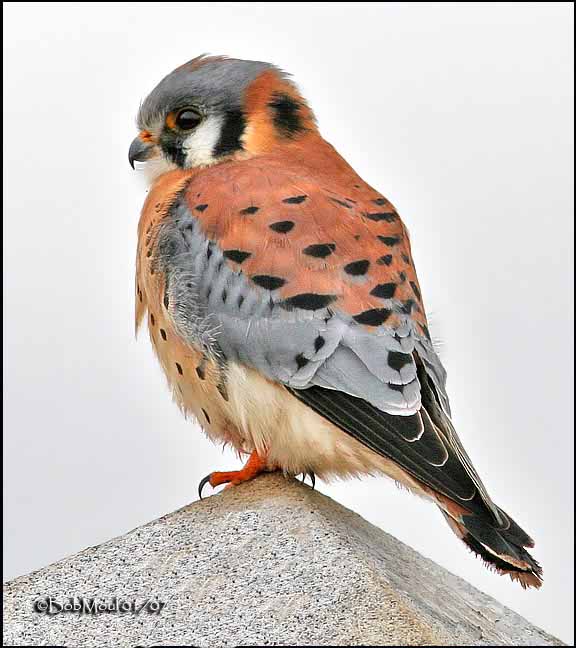
Male plays the first role in search of nest site. When found, it goes for a female and invites her in the place. It often brings food, flies with rapid wing beats in a floating flight, and calls to invite her to follow it to the nest. Sometimes, female leave the nest to fly with it.
FLIGHT:
American Kestrel has typical wings to fly quickly. It flies easily and it may retain itself in the air with fanned tail.
REPRODUCTION:
American Kestrel’s nest is small, without any material, located between 3,50 and 25 metres above the ground, in tree or cliff, in cavities or crevices. Female prepares a shallow depression scratching into the cavity, to lay its eggs.
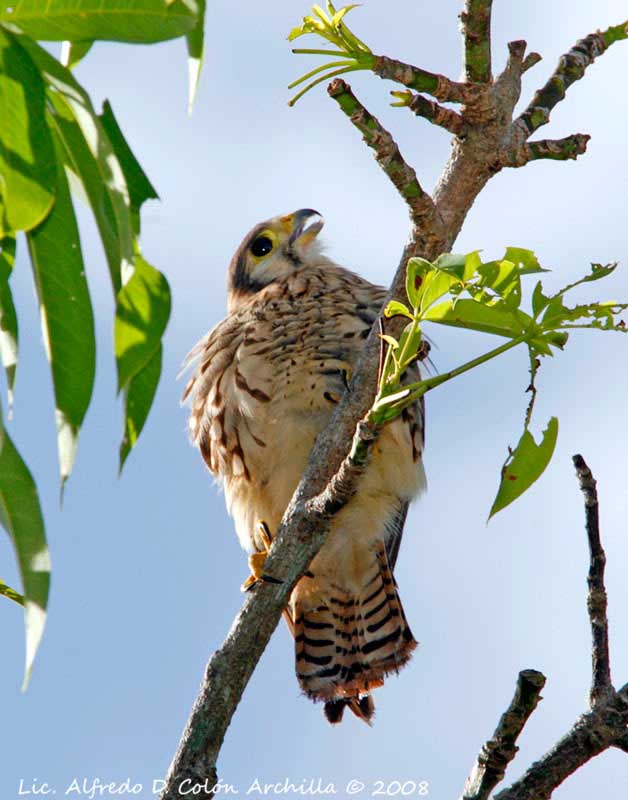
She lays 4 to 5 white or pinkish-white eggs, spotted with brown, at intervals of two or three days. Incubation lasts about 29 to 31 days, by both parents. Chicks are altricial, and they are brooded during the first nine days, and then, only at night or with bad weather.
When they are two weeks old, adults bring entire prey at nest. They are able to flight at about 30 to 31 days of age, and they are fed for some days more by both parents.
Nest may be reused for second clutch. Male takes care of the first brood and female incubates the second clutch.
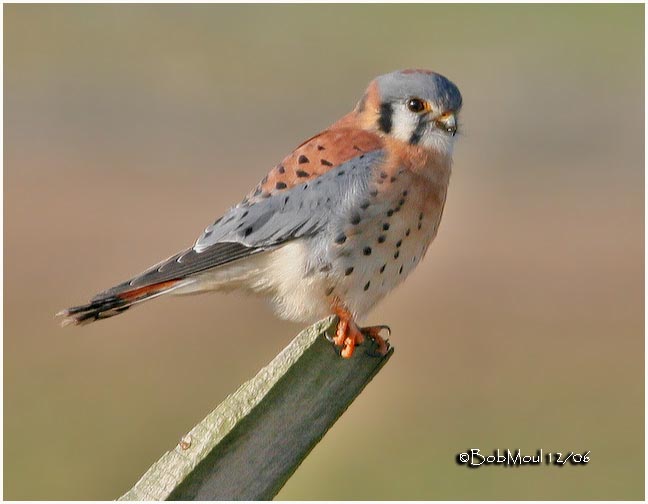
DIET:
American Kestrel feeds on large insects as grasshoppers during summer. In winter, it feeds on small mammals and birds, (as sparrows), chicks, lizards, scorpions and amphibians.
In desert, young only feed on insects during the first week, and then, also mice.
PROTECTION / THREATS / STATUS:
In wild, 50% of the chicks survive. Human help with nest boxes gives good results in areas where cavities are restricted.
Fr: Crécerelle d’Amérique
All : Buntfalke
Esp : Cernícalo Americano
Ital : Gheppio americano
Nd : Amerikaanse Torenvalk
Russe : Пустельга воробьиная
Sd : Sparvfalk
Photographs by Alfredo Colón
Puerto Rico Wildlife
Photographs by Bob Moul
Nature Photography
Text by Nicole Bouglouan
Sources:
HANDBOOK OF THE BIRDS OF THE WORLD Vol 2 by Josep del Hoyo-Andrew Elliot-Jordi Sargatal - Lynx Edicions - ISBN: 8487334156
FIELD GUIDE TO THE BIRDS OF NORTH AMERICA - National Geographic Society - ISBN: 0792274512
THE HANDBOOK OF BIRD IDENTIFICATION FOR EUROPE AND THE WESTERN PALEARCTIC by Mark Beaman, Steve Madge - C.Helm - ISBN: 0713639601
All About Birds (Cornell Lab of Ornithology)
Wikipedia (Wikipedia, The Free Encyclopedia)
The Hawk Conservancy Trust (Hilary Smith)
Animal Diversity Web (University of Michigan Museum of Zoology)
What Bird-The ultimate Bird Guide (Mitchell Waite)